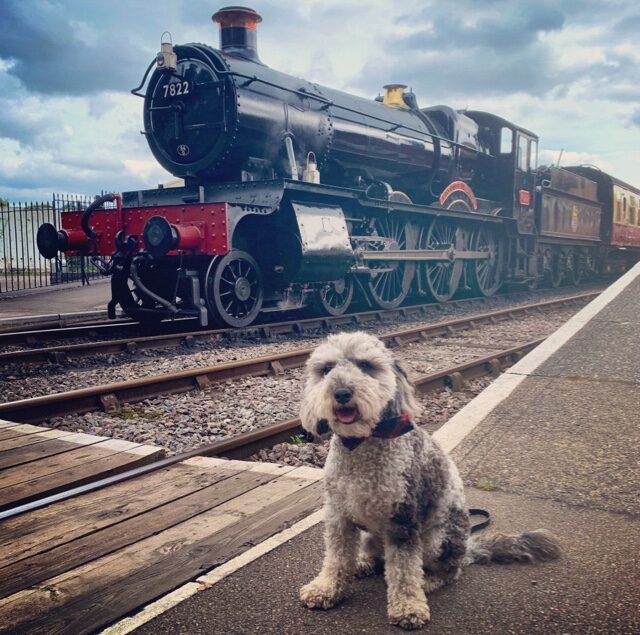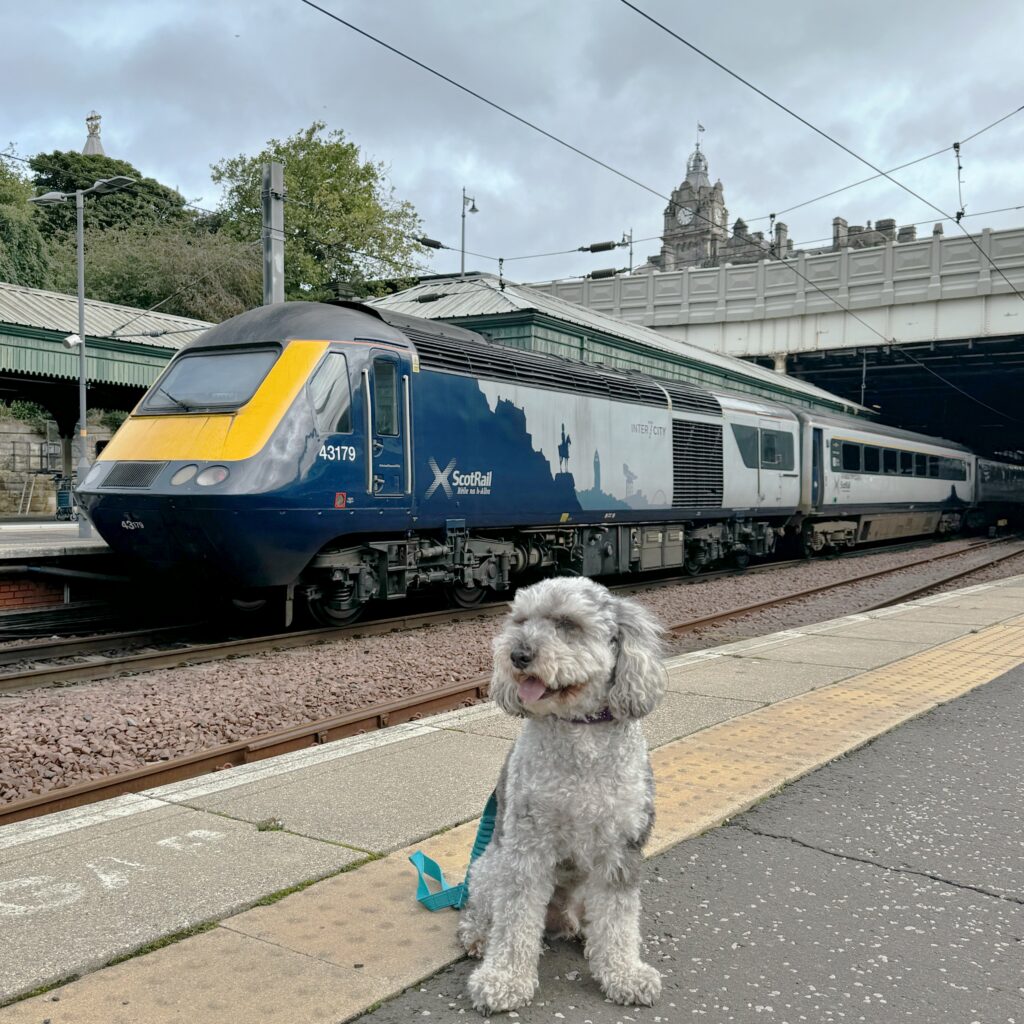
On September 3rd 2024, it was announced that ScotRail’s Inter7City High Speed Train fleet used on routes between Glasgow, Edinburgh, Aberdeen and Inverness, is to be replaced with formal procurement due to start within weeks.

ScotRail operates 52 Class 43 power cars with 22 sets of Mark 3 coaches modified with sliding doors. Two, No.’s 43030 and 43140 were written off after the 2020 Carmont derailment. ASLEF, the train drivers union, have called for the withdrawal of the ScotRail HST fleet for a number of years as “not fit for purpose”citing drivers descriptions of the trains as “notoriously unreliable”, an “unmitigated disaster” and that using them is “tantamount to environmental vandalism”
ASLEF have further expressed the view that “the HST’s are not crashworthy and do not meet modern safety standards. Their fibreglass cabs with wooden frames bolted on were built in the 70’s and are not fit for purpose for speeds of up to 125 mph. As such our members who drive these trains have little or no confidence in them.”
Cabinet Secretary for Transport, Fiona Hyslop announced ScotRail will lead the acquisition of replacement rolling stock and a detailed delivery timetable will be announced at the award of the contract, adding; “Resilient, reliable ScotRail services are key to encouraging more people to choose to travel by train rather than car, to cutting our transport emissions and to helping to move people around Scotland for work, leisure and learning. Over 4 million passenger journeys were made on inter-city trains in the last year. We want to maintain and where possible, increase that number choosing to go by train between Scotland’s cities. We want to replace the current inter-city fleet with trains which provide more comfort and accessibility for passengers on these routes. This planned investment will ensure the reliability of our inter-city routes for the long-term, will reduce emissions from inter-city services and will support our efforts to decarbonise Scotland’s railways.”
ScotRail Managing Director Joanne Maguire said “today’s announcement is good news for our customers and an important step for ScotRail as we work towards delivering a safe, green, and reliable railway.”
Although no announcement on whether new-build or cascaded trains will be deployed, suitable inter-city rolling stock could soon become available with the introduction of East Midlands Railway’s Hitachi Class 810 bi-mode units, which will replace its Class 222 Meridian DEMU’s. Introduced by Midland Mainline from 2004, EMR operates 27 sets, running in five and seven-car formations, owned by Eversholt.
I mention the Inter7City HST’s because we had already planned a road trip which would give me an opportunity to see these surviving trains from a bygone age of British Rail at Edinburgh and Aberdeen.
At Edinburgh Waverley Yoshi and I were very kindly allowed through the electronic ticket barriers and on to the platforms to photograph the HST sets. We were approached during our visit at the end of platform 18 by a member of station staff who wanted to know if we were “lost or just catching the breeze”. Once we’d explained ourselves, we had a friendly chat as we walked over to platform 2 in time for the next HST arrival.

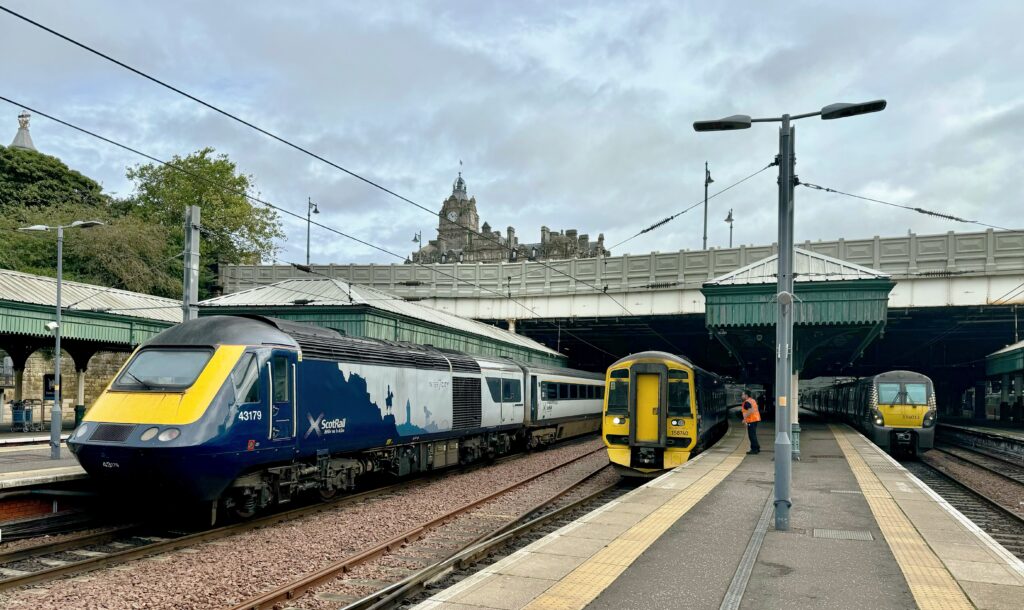






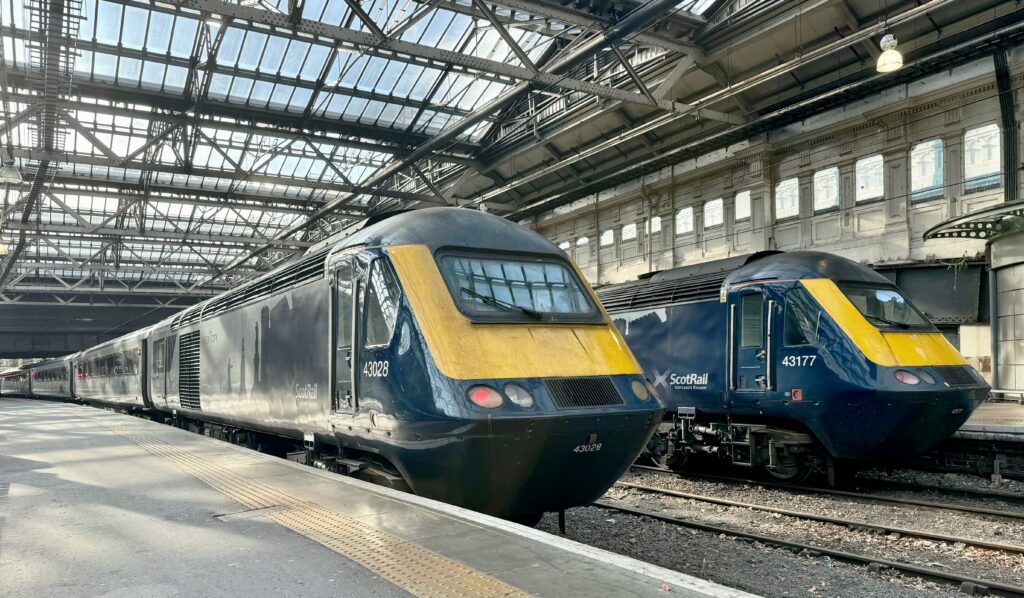
The dark blue and pale grey ‘Inter7City’ livery features large silhouettes of landmarks in the seven cities of Scotland. Before relivery, the power cars were in the plain blue livery of First Great Western.
Abellio ScotRail received nine 4-carriage and 17 five-carriage trainsets from Great Western Railway (GWR) for use on longer-distance services between the major Scottish cities.
The power cars were refurbished at Brush Loughborough, with the coaches being refurbished at Wabtec Doncaster. The first set, which included power cars No.’s 43021 and 43132, was delivered to ScotRail on 1st September 2017. The set was transferred to Aberdeen Clayhills on 10th September for the start of driver training. The first refurbished set was due in February 2018, with a full fleet in service by December 2018.
On the 15th October 2018 after months of crew training, the first revenue earning and fully branded ‘InterCity’ diagram began and ran with power cars No.’s 43033 & 43183 along with refurbished MK3 Set HA26 on the Edinburgh – Aberdeen route.


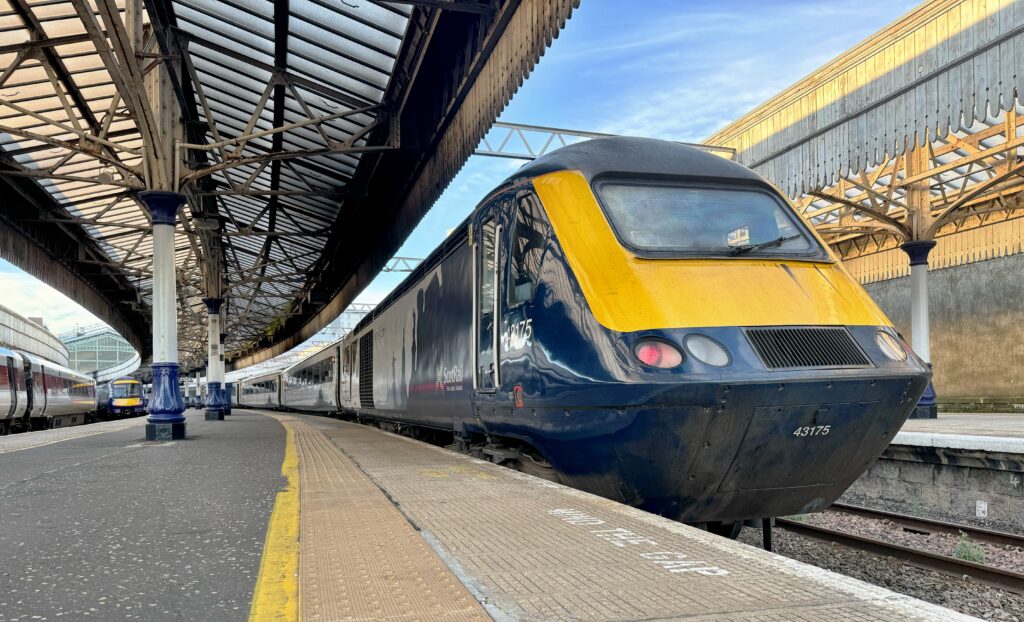
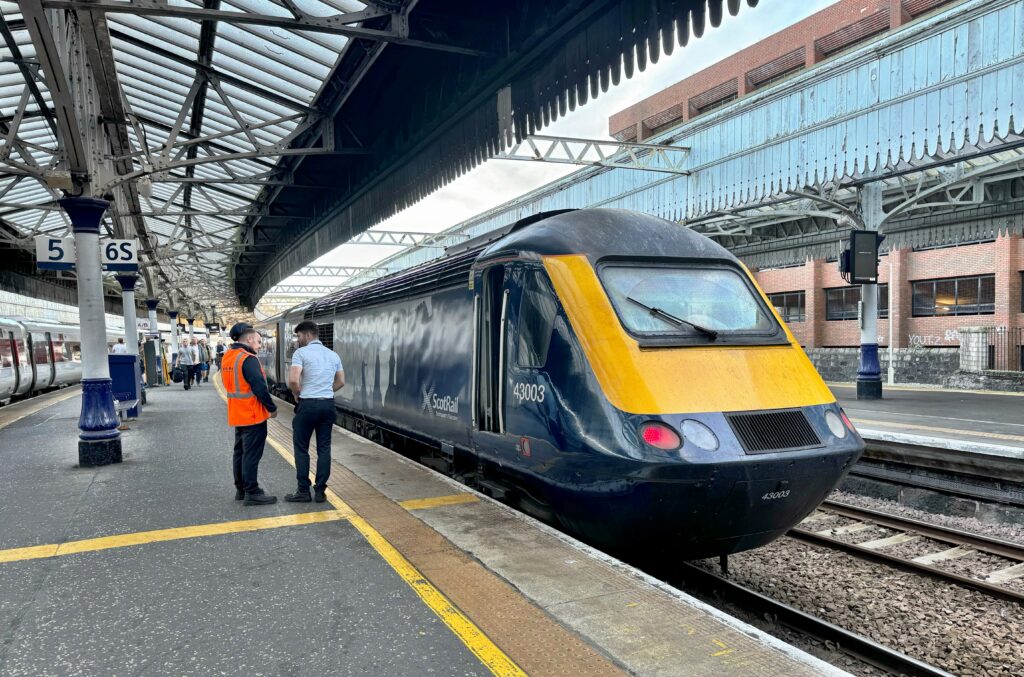

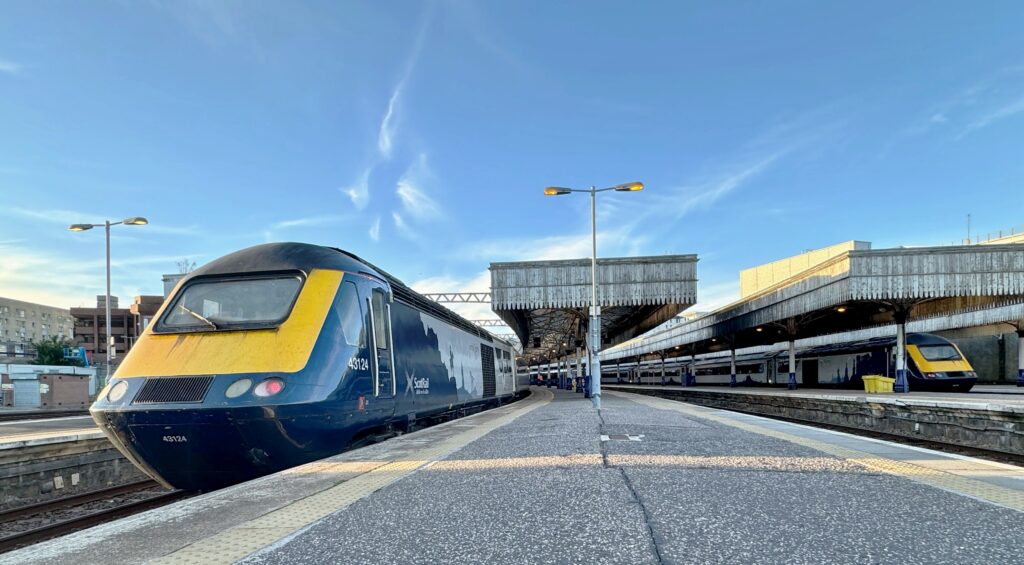
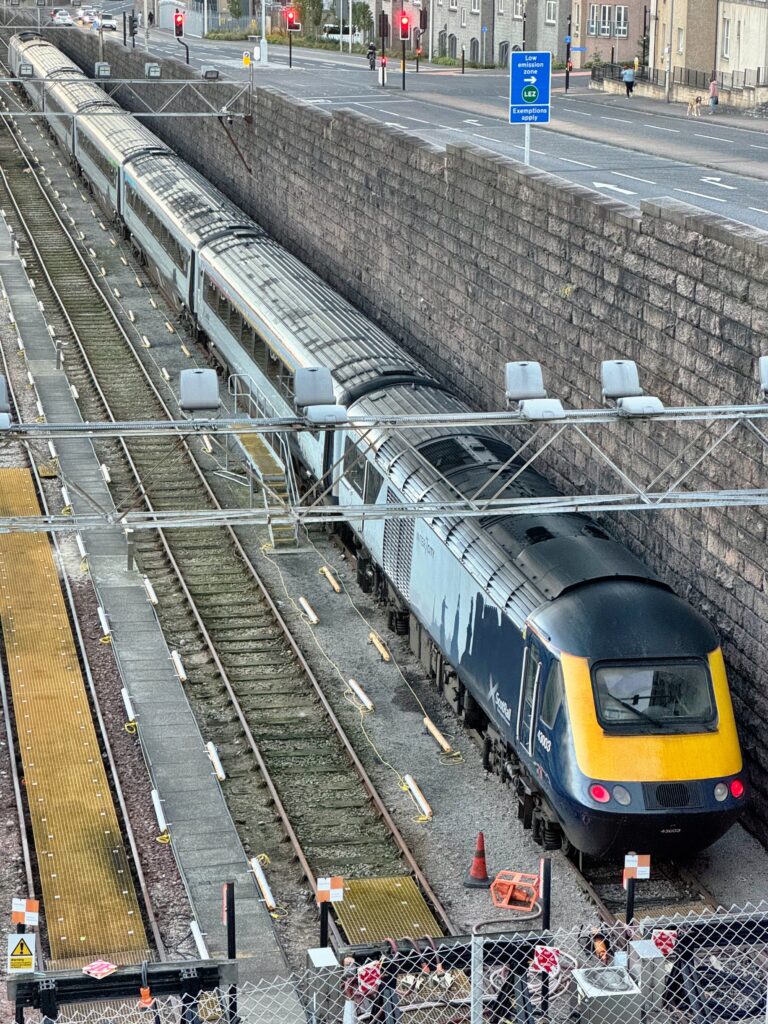
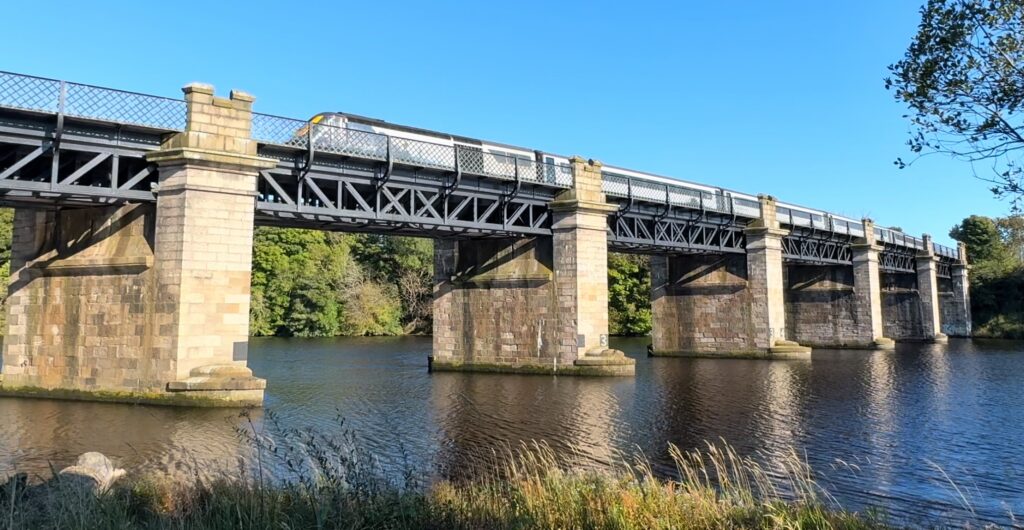



While in Aberdeen, as well as taking the opportunity to pop down to the railway station one evening to see some ScotRail HST workings, I was also able to observe Class 73/9 No. 73968 at rest having worked into the station on empty coaching stock move 5B16 1935 Aberdeen Clayhills Car.M.D to Aberdeen prior to heading the Aberdeen to Edinburgh section of 1B16 2143 Aberdeen to London Euston.
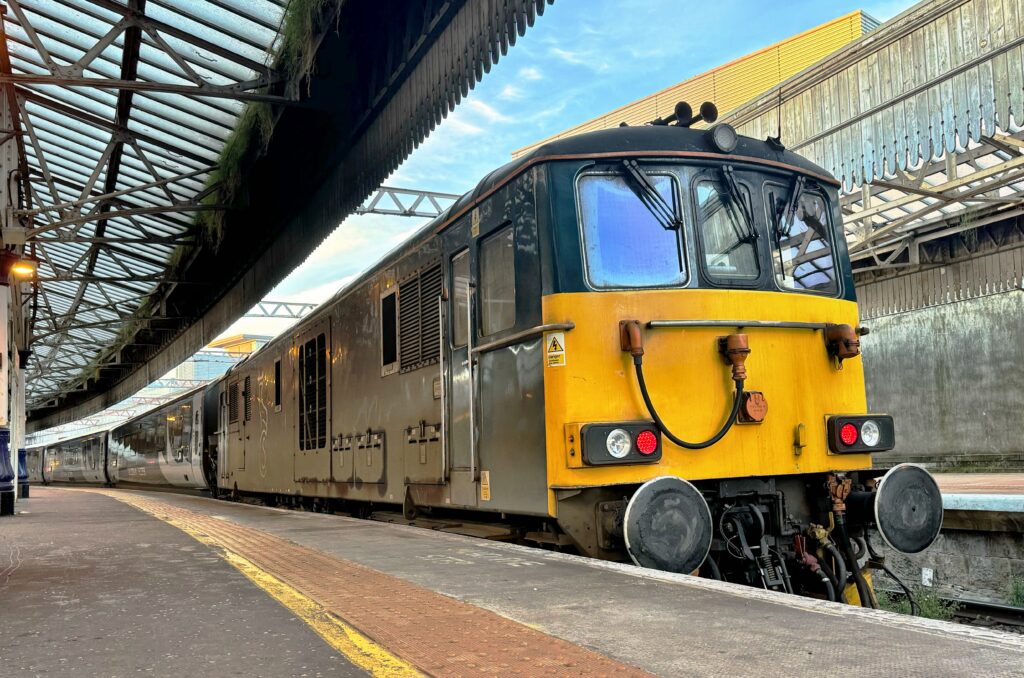
Class 73’s are Electro-Diesel locomotives, built by English Electric between 1962-1967 for the Southern Region of British Rail. Primarily intended to work on 3rd rail electrified lines, as built they were also equipped with a 600hp diesel engine for short distance movements.
Between 2013 and 2016, eleven of these locomotives owned by GB Railfreight were rebuilt by Wabtec at the Brush Traction works in Loughborough and designated Class 73/9.

The rebuilt locos have a 1600hp MTU ‘R43 4000’ V8 diesel engine, coupled to a new Lechmotoren alternator. The existing bogies and DC traction motors are retained. The locos are now fitted with AAR multiple working control and can also work with class 66 and 67 locos, however the old Style MW jumpers are kept for compatibility with un-rebuilt Class 73’s. Other features retained were the driving controls on both sides of the cab, the drop-head buckeye coupling, central buffing plate and retractable side buffers.
Five locos for duties in Southern England are numbered 73961 to 73965 and painted in GBRf livery. Six of these locomotives are deployed on Sleeper services north of Edinburgh replacing Class 67 locos from 2016. The locos utilised for Caledonian Sleeper duties are numbered 73966 to 73971, and painted in ‘Midnight Teal’ livery.

No. 73968 was formerly No. 73117 (E6023).
The Caledonian Sleeper locos No.’s 73966-971 have several detail differences to the earlier No.’s 73961-965 batch:
* Driving Desk is more extensively modernised.
* The cab centre window is ‘unblanked’ and fitted with a wiper.
* 1-piece miniature obstacle deflectors fitted.
* High-level air hoses removed.
* Communications jumper socket left of coupling.
* Additional main air reservoir pipe left of coupling.
* NRN Radio and aerials. (NRN radios removed in 2016).
* ETS on/off indicators on the sides of the Headlamp clusters.
* Electric Train Supply to coaching stock increased from ETH 38 to ETH 70.
* 3rd-rail pick-ups were initially retained, but isolated.
* RETB-NG (fitted to the locos in Scotland during 2016).
* The buckeye coupling and central buffing plate would later be removed in favour of drop-head Dellner couplings, with the obstacle deflectors changed to accommodate this.
* The cab centre window (formerly a 2-character headcode display) was not installed on locos No.’s 73966 and 73967 until return visits to Loughborough in February 2016.
* The conversion programme and introduction to service (originally intended for the 1st April 2015) was severely delayed, a major factor being the new alternators suffering from vibration problems, particularly when at full power.
* From October 2016 the Sleeper Class 73/9s were only providing ETH, with Class 66 providing traction, rather than working in multiple.
* Delivery of the final conversion No. 73971 was postponed until November 2016, while a solution to the alternator issue was sought.
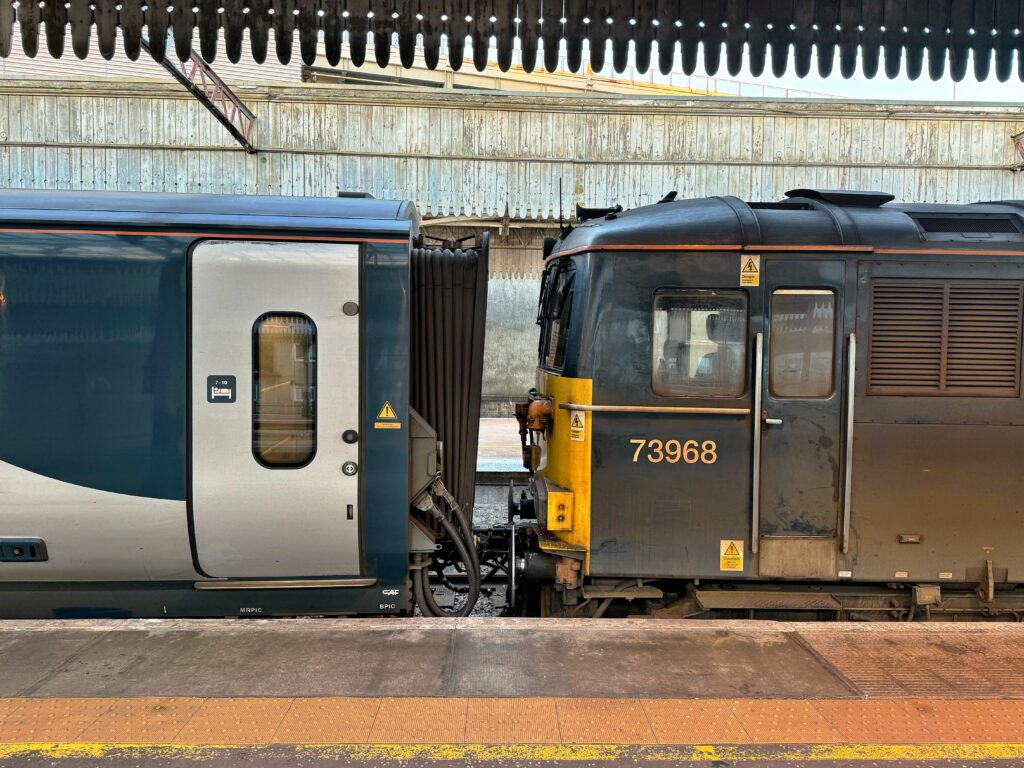
* Further changes to the locomotive were required to operate with the new Mk5 sleeper coaches which have dellner semi-automatic couplings.
* The first to be equipped was No. 73971 which went south to Brush at Loughborough on 19th of April 2017 and returned to Craigentinny on 9th July 2017 with its new drop-head Dellner coupling fitted, but covered up.
* The class 73/9s had initially retained 3rd rail pick-up shoes, but these were removed when the six locomotives visited Eastleigh Works for new wheelsets in 2019/2020.
Source: http://www.scot-rail.co.uk/page/Class+73#google_vignette
For The Record
The Heart of Wessex Line closed between Castle Cary and Weymouth on Monday 23rd September 2024 to Sunday 29th September 2024 as Network Rail replaced less than a mile of over fifty year old track. Improvements were also made to the junctions either side of Maiden Newton railway station. A rail replacement bus service operated during the closure period for passengers.
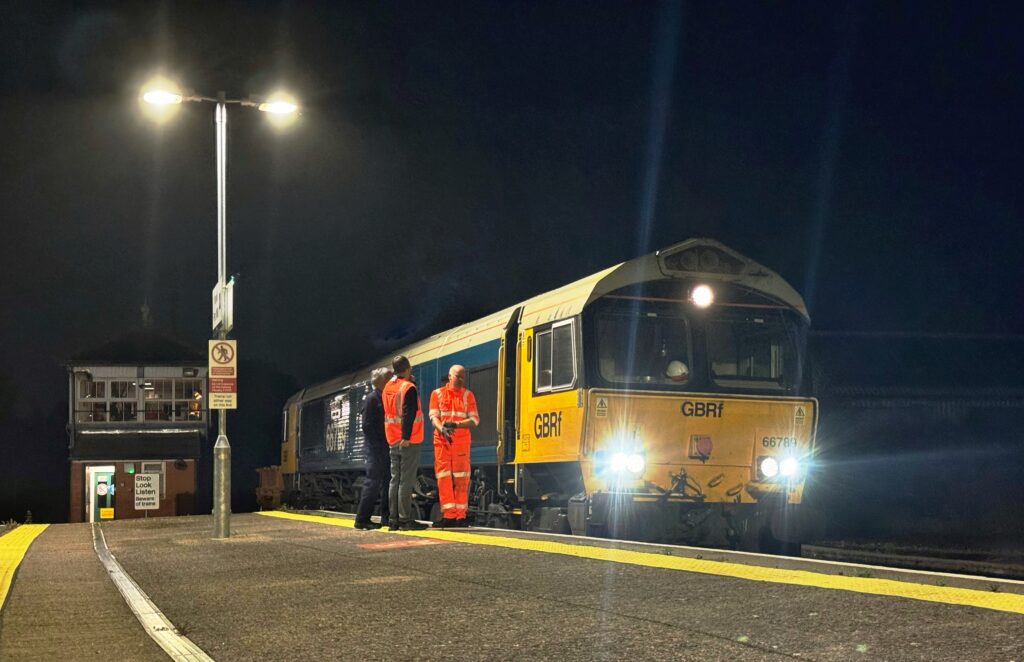

The first two engineering trains in association with the works arrived at Yeovil Pen Mill in the early hours of 23rd September. Colas and Freightliner were also involved with engineering trains during the ensuing days.
Monday 23rd September and it was time for the monthly Plain Line Pattern Recognition (PLPR) train which this time around was top and tailed by GBRf Class 73/9 electro-diesel locomotives No. 73965 ‘Des O’Brien’ and 73962 ‘Dick Mabbutt’.
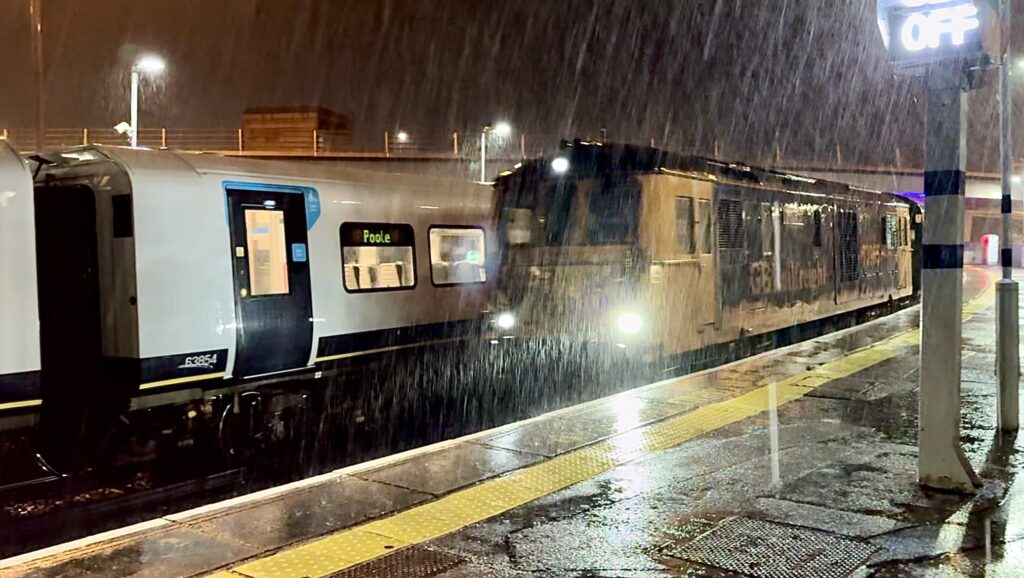
I saw the train reporting as 1Q51 1115 Derby R.T.C.(Network Rail) to Eastleigh East Yard via Weymouth passing through Poole in heavy rain. Must be mad!
GBRf Class 69 No. 69009 ‘Western Consort’ was once again charged with transporting South Western Railway Class 458 Electric Multiple Units between Widnes Transport Tech and Bournemouth T&RSMD. The loco hauled refurbished SWR Class 458/4 No. 458411 on its return south as 5064 1603 Southampton Central to Bournemouth T&R.S.M.D, returning later with SWR Class 458/5 No. 458502 reporting as 5Z66 2018 Bournemouth TRSMD to Eastleigh East Yard.

As part of the operation, the consist heads to Poole Storage Sidings where the loco changes ends and the train heads back east along the South Western Mainline.
Network Rail’s Ultrasonic Test Unit (UTU) visited Dorset in the early hours of 26th September. UTU’s usually have one locomotive at one end and a Driving Brake Standard Open (DBSO) at the other. The train can operate in push-pull mode with the loco hauling or pushing with the DBSO controlling it. UTU trains have ground penetrating radar systems to detect voids and deformities up to two metres into the ballast and ground and employ rail profile scanners to identify issues in track profile in comparison to an ideal track template.
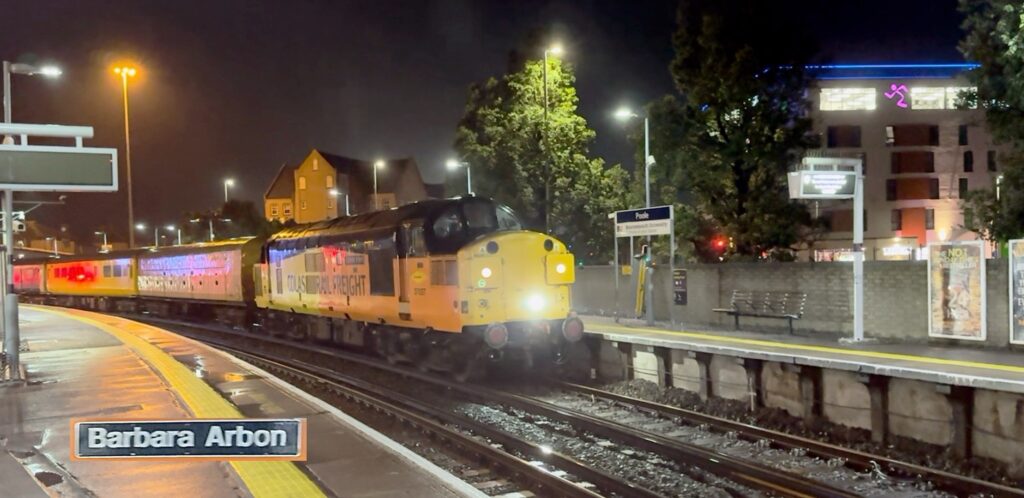
Running 102 minutes late, Colas Railfreight Class 37 No.37057 ‘Barbara Arbon’ passes through Poole working 3Q02 2140 Eastleigh East Yard to Eastleigh East Yard via Weymouth. No. 37057 was named in honour of Barbara Arbon on July 4th 2021 at Loram, Derby. Barbara was a member of the Colas Infrastructure Monitoring Team who sadly passed away in 2020. She was affectionately known by her colleagues as ‘Auntie Barbara’.
“The Last Post”

Reportedly the final DB Cargo operated mail trains on the West Coast Main Line ran on Friday 20th September 2024, the cessation of the services being brought forward from the original end date of October 10th. I was fortunate enough to see Class 325 No.’s 325001 & 325002 passing Quintinshill working 1M27 1235 Shieldmuir Mail Terminal to Willesden PRDC while we were on a walk to remember the Quintnshill Railway Disaster which claimed the lives of over 200 people and left 246 injured. The incident remains the worst rail disaster in British history.
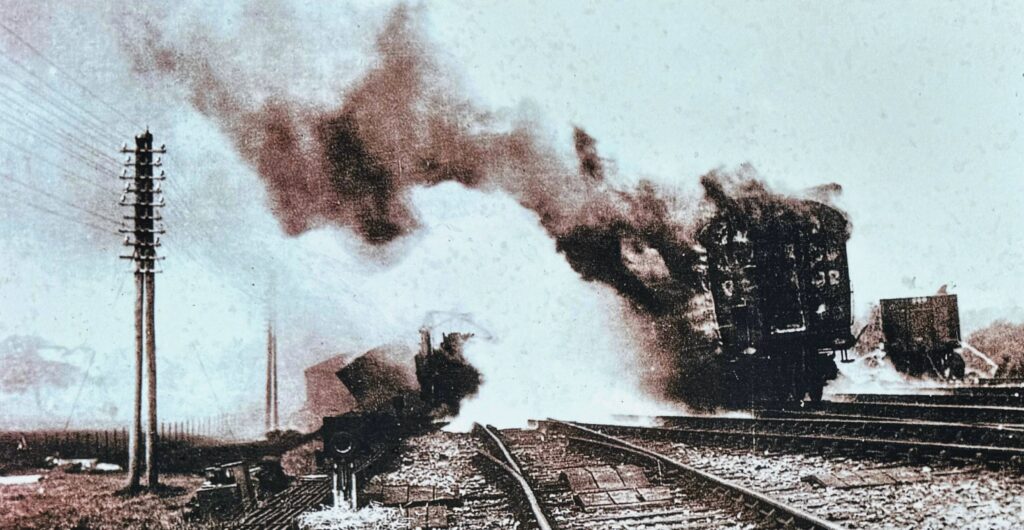
Human error caused the accident, two signalmen made several careless mistakes and omissions in their duties. They had shunted a local train onto the main line and while it stood there in plain view of the signal box, they accepted a troop train travelling south carrying 500 soldiers of the 1/7th Royal Scots Territorial Battalion and then, minutes later, a sleeper from London heading north on the same line. The local train’s brakes were on, which upon collision, caused the troop train to telescope to half of its original length, while survivors staggered from the wreckage, the Carlisle express ran into It.
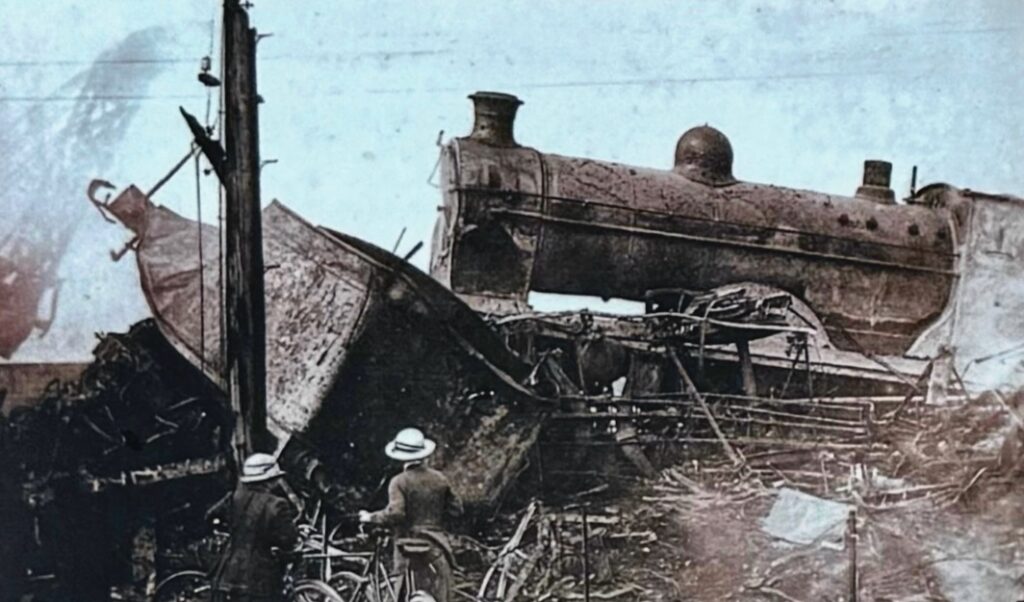
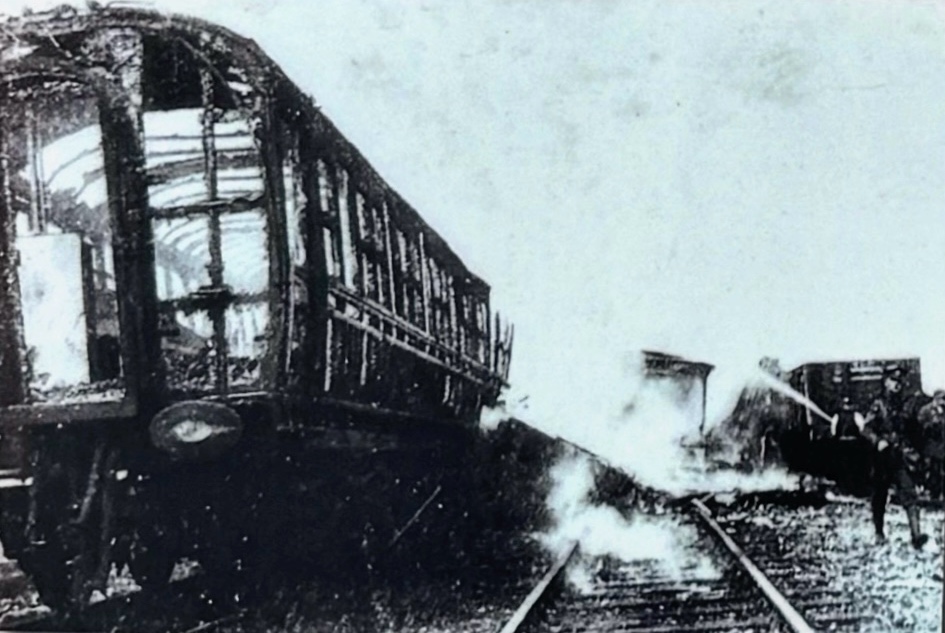
Immediately after the collisions, fire broke out. Hot coals from the engine of the troop train set alight the wooden carriages and the flames were fed by gas from the train’s lighting supply. Despite vain attempts to quell the fire with water from the tanks of two goods trains and by syphoning water from a nearby stream, the inferno raged for 24 hours with devastating results. Once it was extinguished, 82 bodies were unrecognisable and 50 were never traced at all.
Memorials to the troops were built at Rosebank Cemetery, Edinburgh and one was erected at Gretna Visitor Centre by the Scottish Area of the Western Front Association, being unveiled on 21st May 1995. In September 2010 a plaque to commemorate the disaster was unveiled on Blacksyke Bridge which overlooks the crash site. Today, little trace of Quintinshill remains, the signal box having been demolished in the early 1970’s.



To round off a Scottish themed September, on Monday 23rd, while Caroline was shopping in Southampton, I decamped to Eastleigh for a few hours to see Locomotive Services Class 37 No. 37401 ‘Mary Queen of Scots’ which has been outshopped in retro ScotRail livery depart with stablemate Class 57 No. 57003 ‘Inter City Railway Society 50th Anniversary 1973 – 2023’ which carries Trainload Freight Speedlink colours.
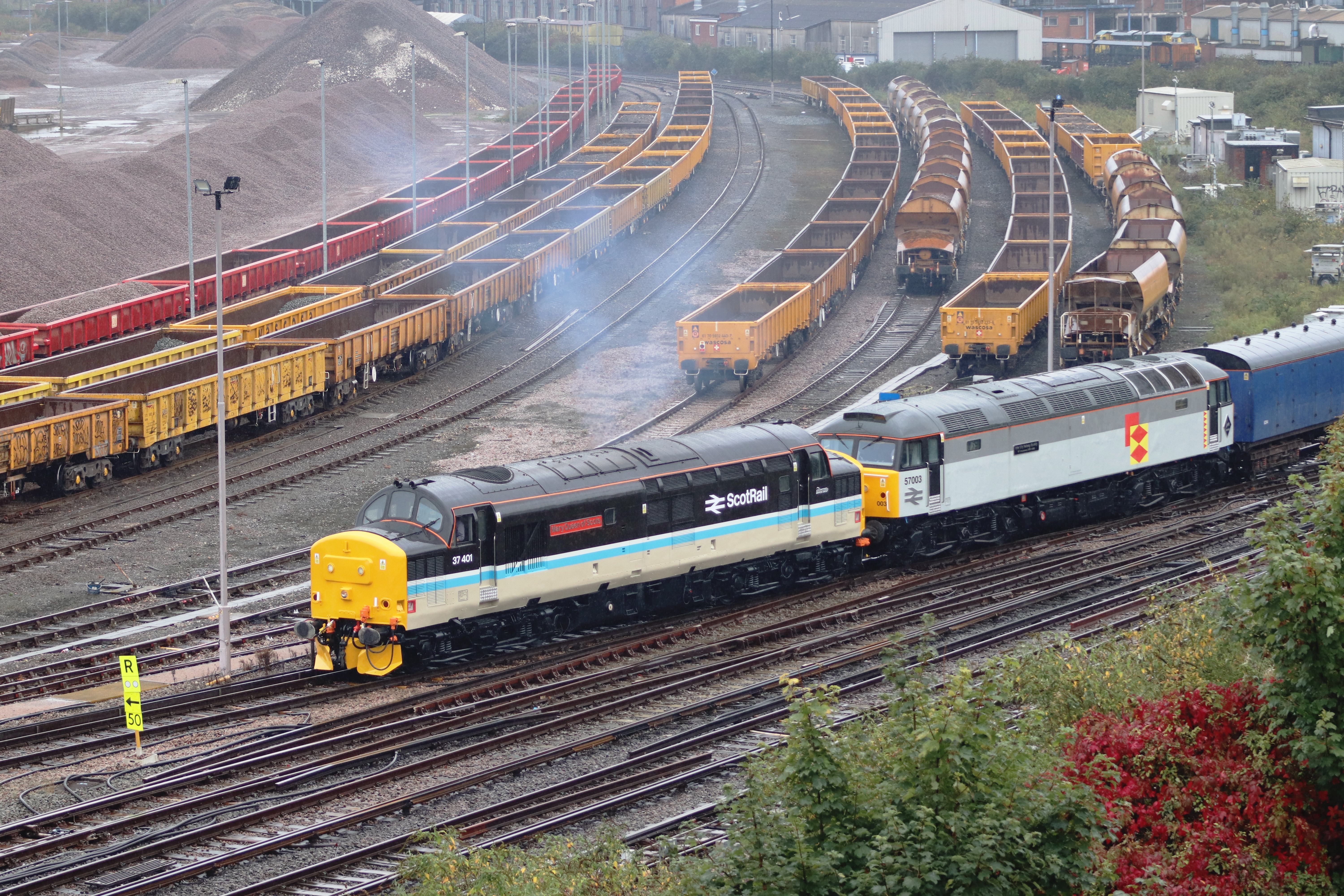

That’s it for another blog entry. We’ll be back in a few weeks with a look back at October lineside adventures. Thanks for popping by and for your comments and corrections which are always welcome.
Don’t forget you can catch up on our latest videos on the Railway Dog YouTube Channel or catch random witterings and photos via the new Railway Dog Facebook group.
Be seeing you!
